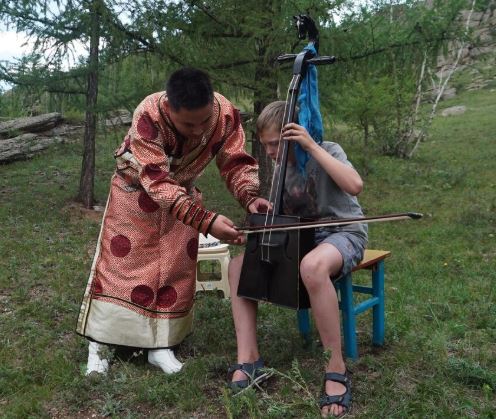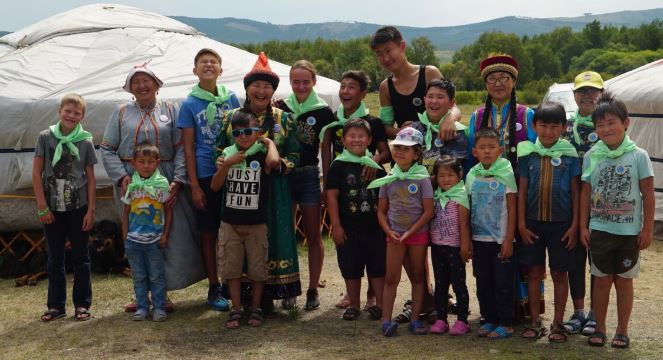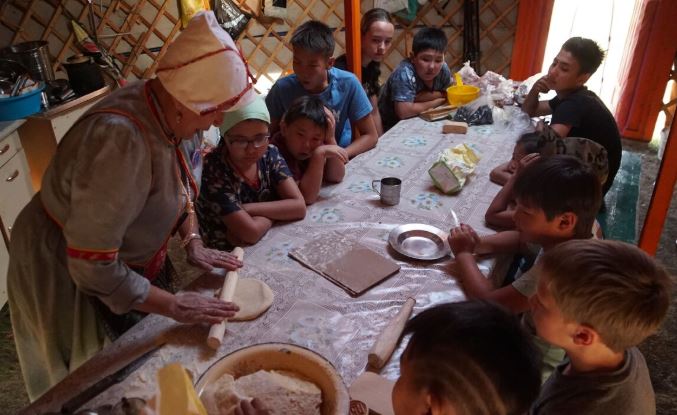
The Buryats who number approximately half a million, are one of the largest indigenous peoples of Inner Asia. They have a rich and ancient culture with their history, spirituality, worldview, lifeways and a shared landscape. However, during the past century, the Buryats as a nation have experienced disturbances and disruptions that continue to threaten them to this day. The deeply divisive political power struggle has forcibly driven the previously strong Buryat union of nomadic Mongolian-speaking tribes into the three neighboring nation-states: Russia, China and Mongolia. Today, many communities of the divided Buryat nation are facing serious issues of self-determination and loss of traditions. Massive and effective assimilation has resulted in the loss of sense of identity and very importantly, the Buryats’ native language.
In the heart of the Yazguur (or roots and origin) program is the commitment to provide guidance to the Buryat youth who are in search of their identity and their rightful place especially that their ancestry or the lineage of Buryat generations has to be traced and affirmed in the modern world. With the disruptions in their historical processes and socio-cultural practices, the preservation and continuity of knowledge and value systems need urgent attention and re-creation. The project is reawakening the indigenous creativity, original thinking, and the natural sense of belonging to a particular culture. History and traditions of the indigenous peoples are being reclaimed and transferred to the Buryat young generation, with the aim of strengthening their ties to their native land.

The program implementers of the Nomadic Schools of Creativity and Arts immersed in the cultural spaces of nomadic Buryats of Mongolia, where they interacted with elders and indigenous cultural practitioners. Their purpose was to restore their relationships with nature and the environment, and to connect with, be grounded on native landscapes.
Following the classroom learning structure, the children’s interest in arts was particularly observed where they translated the knowledge they gained and the information they learned into creative works. Classes were held for various age groups of younger and older children with gender balance noted and considered, regardless of social status. Both Buryat and Russian children expressed interest and enthusiasm in the learning process. Buryatia’s indigenous residents also were included and they appreciated the new knowledge they acquired about the main features of the Buryat Zurag arts tradition.

The project was instrumental in strengthening inter-generational relationships where the traditional role of elders in child-raising was observed and strengthened. Inside the classroom, an innovative program using indigenous approaches to child-rearing was developed, while renewing and restoring traditional artistic expressions of the Buryat identity.
The Nomadic Arts School members visited herder camps and invited parents who enthusiastically participated in the education program, with the parents noting that they did not have such opportunities in their childhood.
The implementers had to schedule activities based on the children’s availability which was on weekends when they could travel to participate in the program. The frequency of classes had to be adjusted according to the children’s school workloads. With Buryatia’s winter climate posing difficulties, classes were conducted during a warmer season when school children had a lighter school load.

The project Nomadic School of Yazguur Creativity is ongoing to this day, with interesting new situations that pose fresh insights and challenges. What remains constant is the interest and involvement of the children and the elders who express consistent appreciation because of the learning opportunities gained from the project. Such a distinctive program is indeed appreciated when it is yielding amazing results in preserving traditional knowledge and enhancing inter-generational understanding, as manifested by the Buryat people.
(The project Nomadic School of Yazguur (Roots, Sources) Creativity is being implemented by the Initiative Group of Yazguur Buryat Cultural Practitioners with support from PAWANKA Fund.)

